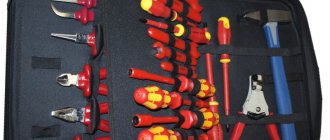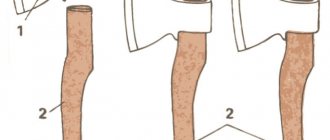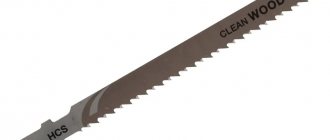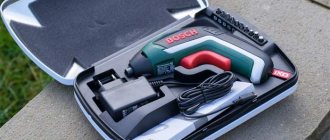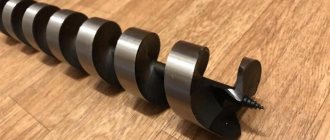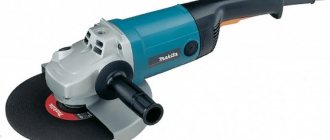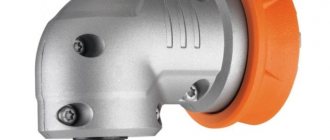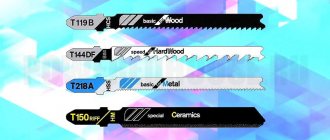Working with pipes is a task for classified plumbers and hobbyists, often involved in construction and renovation. To create high-quality water supply and sewer connections, you need not only knowledge, but also suitable reliable tools. One of them is a clamp - a device used to cut threads on any pipe, not only gas pipes, but also plumbing ones.
In this article, you will find the best options for this tool that can be found on sale in 2022.
Best clupps: TOP-7
Rating of the best clumps
| Photo | Name | Rating | Price | |
| #1 | 700 RIDGID 12651 | ⭐ 4.95 / 5 | Find out the price | |
| #2 | REMS Amigo 2 540020 | ⭐ 4.85 / 5 3 - votes | Find out the price | |
| #3 | RIDGID 690-I 11-R 1/2-2 BSPT | ⭐ 4.8 / 5 2 - votes | Find out the price | |
| #4 | BSPT VIRAX 137563 1/2-2 | ⭐ 4.75 / 5 | Find out the price | |
| #5 | VIRAX 1/2-1.1/4′′ BSPT 138021 | ⭐ 4.65 / 5 1 - voice | Find out the price | |
| #6 | Voll V-Matic B2 | ⭐ 4.55 / 5 2 - votes | Find out the price | |
| #7 | ZIT-KY-50 | ⭐ 4.5 / 5 3 - votes | Find out the price |
Which clamp would you choose or would you advise to choose?
Take the survey
What is a klupp?
As has already become clear from the introduction, a die is a tool for carving pipes. In fact, with a screw you can not only make a new thread, but also restore the old one. Repairing with such a tool is a great help in cases where the nut was not tightened correctly, and because of this the thread was cut off.
Klupp is not a very expensive tool, the price of which can be considered quite affordable for the average buyer. This allows both amateurs and professionals to get a high-quality and inexpensive product.
The design of manual and electric types is generally similar. Both use hard, expensive steel from which the cutters are made.
An important feature of the tool is the threaded part, in which the first incisors are not made as deep as the rest. Their location allows them to prepare the first turns and set the thread direction in the correct plane. The remaining incisors are made deeper and are placed at the same level.
Working with a clamp allows you not only to free up more time for performing other tasks or simple relaxation, but also to reduce the labor costs of the worker.
A tool such as a clamp is needed by many who work with pipes
Video - What is a klupp
Criterias of choice
When purchasing a thread-cutting die, you need to consider the following points:
| Criterion | Description |
| Equipment | Can be standard or extended. Differs in the number of dies of different diameters. |
| Unit power | Two things depend on this parameter associated with the electric motor: quality and speed of operation. |
| Tool dimensions | On average, the weight of an electric type clamp is 20-25 kg. But there are both more and less massive instruments. This difference suggests that weight will directly affect ease of storage and use. |
| Device ergonomics | This criterion affects how well the instrument will fit in the hand of the instrument owner. It is important to consider whether there is a way to remove chips during the carving process. |
| Material and thread direction of nozzles | Most pipe threading devices should include attachments designed not only for right-handed threads, but also for left-handed threads. The nozzles should not be made of cheap metal - they wear out quite quickly. For this reason, you need to choose only those cutters that are made of alloy steel. |
| Build quality | The tool must be well assembled and should not fail during operation. |
Choosing a tool such as a clamp must take into account a variety of criteria
What can you use for thread cutting?
If we consider the process from the point of view of labor and time costs, then the best option would be not a pipe clamp, but a lathe. You just need to place the pipe in the spindle, then tighten it, cut off the excess using a cutting tool, straighten the edge, and then, after changing the tool, select the parameters of the required thread. Basically, that's all.
Note! Even in the absence of a cutter, such a machine will make it possible to cut threads using hand tools. Moreover, in this case the tool will not overheat, which is also a definite plus.
But not everyone has the opportunity to use a lathe. Therefore, only hand tools remain - the die and the die discussed in today’s article. But besides these tools, you will also need something to cut the pipe. And this can be done either using a pipe cutter, or using a manual turbine or an ordinary hacksaw for metal.
Varieties
Today, the market for plumbing tools offers a large assortment of such devices, so below they will be divided into two categories.
The first category is dimensions. According to them, the groups are divided into:
- Stationary . They are considered a full-fledged machine. In addition to increased power, such dies can make threads on pipes of larger and smaller diameters due to an expanded set of nozzles.
- Portable . They have small dimensions, which allows the device to fit into a case, along with attachments. Designed for cutting threads on standard sized pipes.
The second category is the type of thread. According to it, two types of attachments are placed on the clamps:
- With marks for inch threads . They are usually installed on all devices that are sent to the European market. The thread angle with this attachment is 55 degrees.
- With marks for metric threads . All dimensions on nozzles are indicated in millimeters. The thread angle on such a nozzle is 60 degrees.
There are several types of clamps, differing in characteristics
Application procedure
Before cutting external threads you must:
- Lightly roll the end of the pipe.
- Lubricate it with machine oil, grease, diesel fuel (by the way, an oil can is always included with the electrical device).
- Place a simple or collapsible die on the pipe or insert it into the electrical plug.
- Secure the pipe with an adjustable wrench (you will need the help of another person) or a machine clamp.
- Cut the thread. If cutting is done manually, then it is better to have another person hold the pipe. If using an electrical device, then just press a button.
Types of clumps
Most manufacturers do not have a specific classification of clamps. In principle, they do not feel the need for it. But in general, two types of such devices can be distinguished - manual and electric.
Each of these types differs in some way: volume, type of material, number of nozzles, etc.
Let's look at two types of clamps below.
Manual clamp
This type of tool is quite familiar to plumbing workers. Its tasks are not only to create threads on a pipe, but also to repair existing threads after improper connection, due to which the thread could be broken. All this can be done even in hard-to-reach places.
The disadvantage of the manual version of the tool is the need to apply a lot of force to the handle. This tool can handle standard 1⁄2-inch and 3⁄4-inch threads easily, but creating threads on large diameter pipe will take a lot of time.
Important! Increasing the applied force requires adding the length of the handle lever. For this reason, hand tool variations are not used when creating or repairing pipe threads larger than 1 to 1 1⁄2 inches in diameter.
Example of a manual clamp
Electric plug
This version of the tool is clearly a professional one, and therefore purchasing it for the purpose of doing homework will be pointless not only from the point of view of benefits, but also from the point of view of expediency.
Power ranges from 800 to 1700 W. The number of heads in a set is up to six. This is determined by the diameter and material of the pipe. The heads themselves can have a diameter from 15 to 50 mm.
Important! Using this variation of the device is much easier than using a manual one.
Example of an electrical plug
A few important nuances
The use of a pipe clamp, as well as any other tool, has its own nuances.
- Before starting work, the pipe must be rolled (the same as with a die). There are many ways to make one end of the pipe a little thinner - using a file, turbine, etc.; You can also just take a hammer and flatten the end a little using an anvil. Another common option is a general one using a gas key.
- If the pipe where the thread is to be cut is part of an existing pipeline, then it must be held with a gas wrench in order to compensate for the rotating moment during threading.
- And if you apply a little grease or even ordinary diesel fuel to the future cutting site, the threads will not become scuffed; on the contrary, it will be easier to cut, and the cutters themselves will last much longer.
- Finally, if you buy new cutters, try to choose the same manufacturer that made the holder. If not, then you may encounter a problem - the incisors simply will not fit into place.
Rules for using the tool
Both variations of the clamp are considered quite easy to use. But this simplicity should not deceive - the tool still requires careful handling if you do not want to spoil the existing thread or the one that is being created. In addition, compliance with the set of rules will ensure the preservation of the instrument itself.
- In the process of cutting threads on a pipe, the workpiece must be firmly secured, since the pipe itself is subject to powerful forces - torque and bending moments. Fastening the pipe with a clamp is a fairly good option for securing the work.
- The correct setting of the cutters directly affects the quality of the thread. To make it good, a lead-in chamfer is placed on the end of the pipe using various tools, depending on the thickness of the pipe wall and the diameter.
- Since the die is a metal-cutting tool, it should be used as carefully as possible. To improve performance, use a coolant lubricant.
- Thread cutting will be easier if you use one of three options: cleaning fluid, waste oil, and grease.
You need to know exactly how to use the tool.
You can use a clamp for any pipe that already has or needs to be threaded. For example, this may be relevant when it is necessary to install a sewerage system, a heating and/or water supply system. In addition, this tool has been used in the following situations:
- Construction of wells and wells.
- Manufacturing of prefabricated structures. These include gazebos, greenhouses, stairs and the like.
Before using the clamp, you need to clean the metal part of the pipe not only from rust, but also from paint. The coating may interfere with operation.
Before cutting the pipe, the technician makes an assessment and decides whether it is possible to place a clamp between the pipe and the wall. It must be pre-marked on the pipe itself. After marking, two sections of the tube are made with a preliminary calculation of the distance for future installation. Afterwards, these edges are cleaned, the chamfer is slightly removed. Only both edges remain with pre-applied marks, which are cut off part of the pipe with a grinder.
It is important to know how to use the tool correctly
A few more words about the principle of operation - useful recommendations
Summarizing all of the above, let's briefly go over the main stages of thread formation again (the procedure with a regular pipe, and not an existing pipeline, will be described here).
Stage one . First you need to take the pipe and carefully fix it using special clamps.
Stage two . After this, the end of the pipe where the thread will be made must be thoroughly cleaned, lubricated with something, and then the device knob installed there.
Stage three . Next, the device must be rotated, applying considerable effort. This must be done until the thread of the required parameters is obtained.
It should also be noted that using the tool described in the article you can cut both metric and inch threads. It is quite obvious that in the first case it is measured in millimeters, and in the second - in inches.
To extend the service life of the die, we recommend adhering to the requirements presented below.
- Replace parts of the tool that are already worn out in a timely manner.
- When choosing a tool, take into account the parameters of the product on which the thread will be cut. It is important that both fit each other in size. And if the die is smaller than the pipe, then during operation strong friction will be generated, due to which the cutters can be deformed.
- Periodically, the device needs to be lubricated, for which a special lubricant is used. The latter is necessary in order to cool the incisors. This way you will protect them from overheating and, as a result, deformation.
As a result, we note that the clamp is a professional tool, and therefore it should be handled in accordance with the operating rules. When choosing a particular device model, you must understand how it operates and what manipulations can be performed with its help. Knowing what material the pipe is made of, what its dimensions and technical characteristics are, you can choose the right tool from a wide modern range. And if you also use it carefully, you will ensure that the die will maintain good condition and original characteristics.
That's all. Be sure to watch the topical video below. Good luck!
Pros and cons of the tool
It is important for a potential buyer to know the advantages and disadvantages of a tool before purchasing so as not to make a mistake with the choice.
Let's look at the pros and cons below.
pros
- Low cost. Due to the division of tools into two categories - household and professional - the cost is different. The increase in price is caused by design changes, such as the presence of a ratchet, electric drive, or large housing. The household appliance is smaller in size, its price will be lower, but you need to use a pipe wrench to rotate it.
- Durability. Due to the subtleties of the equipment design, the cutting element can be removed, then cleaned and even replaced. The wear of such material will be lower due to the direction of the cutting element - it moves in a spiral, which makes the depth more uniform.
- Flexibility of application. Clupps can be used everywhere - in the gas industry, in the installation of water and heat supply systems, sewage systems, and the like.
- Ease of repair. Thanks to the ability to remove the cutters, owners of professional dies are able to change one or two elements of the entire structure without changing the entire product.
- You need to put in less effort. Electric variations of the die, due to their electric drive with a gearbox, make it easier to cut threads.
Minuses
- Hardly ever. The tool is simply perfect for performing its “duties” of creating or repairing threads.
Important! To work properly with the tool, you need to have a lot of free space around the pipe. If, for example, the width is 80 mm or more, then the radius of rotation of the order will be approximately 4 cm.
A quality tool has plenty of advantages
Interpretation of the term
Plashka is a Russian word, klupp has German roots. The interpretation of the meaning of “clump” by dictionaries is almost unambiguous - a hand tool consisting of a mandrel with inserted dies. Dictionaries (Encyclopedic, BES and Technical Railway Dictionary) add two (!) handles. Dictionaries are far from real life, and any manager selling hand tools will be able to offer models of pipe clamps for thread cutting with one handle or without handles - with an electric drive.
What is the difference? It's just a difference in purpose. A die (dies) is a cutting part, and a die is a frame, a mandrel for dies (the latter in the plural).
The difference between a die and a die
People who frequently work pipes know well what threading dies are. This is a small shaped tool for cutting threads. It turns out that both tools are very different in appearance, but perform the same task.
Let's look at the differences between a die and a die.
For example, tool design. The die, which some call a die, is a high-quality steel washer. It has a hole located in the center, and in it there is a comb of blades, as well as channels, the purpose of which is to remove chips.
Interesting! Not everyone can afford such a tool.
An example of a die
From the point of view of the design of the die, it turns out to be more complex, but the ease of its repair makes it possible to ultimately make the tool cheaper. The device itself consists of a long handle for proper reinforcement, as well as a round metal frame in the form of a tube into which the cutter is installed.
Important! Hard tool steel is used in the manufacture of cutters, which reduces the level of stress during their production.
Among other things, the device is distinguished by the structure of the blade comb. The incisors in it are arranged unusually. For example, the first blades make shallow carvings. Other blades located above are already sliding along it, and they are cutting out a full-fledged thread.
Clupp example
TOP 7 models of clumps
ZIT-KY-50
ZIT-KY-50
This electrical plug belongs to the budget segment. Designed for cutting conical threads on various pipes - electrical, water or gas pipes. Their diameter is from 1/2 to 2 inches.
The tool itself stands out for its compactness, which is combined with high performance. Anyone who installs equipment or participates in the construction of a facility can use this clamp.
With this clamp, labor productivity increases, labor intensity decreases, and construction time is reduced. At some points the shift is significant.
In addition to the device itself, the kit includes the following items:
- Plastic case. It can be used for storing and transporting equipment.
- Replaceable heads for thread cutting - there are only six of them, the difference between them is in diameter.
- Lubrication nipple. It can be used to lubricate the tool.
In general, the tool turned out to be quite ergonomic. Due to its high performance, the die quickly cuts threads on pipes - the user does not need to exert any special effort. Any pipe, even steel, can be processed well by this model.
Important! This tool should not be used for professional tasks. It is more suitable for everyday household work.
pros
- high performance;
- possibility of turning on the “reverse” mode;
- compactness and light weight;
- adequate cost of the device;
- ease of use of the tool.
Minuses
- not suitable for heavy loads;
- heats up quickly;
- rapid failure of attachments with constant use.
Voll V-Matic B2
Voll V-Matic B2
This die model also belongs to the budget class, but due to its torque and high power (1350 W), it can be used in professional tasks. Designed for fast and accurate thread cutting on steel pipes. The weight of the tool is relatively light, so it is easy to carry.
This model is actively used in two places - on construction sites and in production. The tool is particularly successful among installers and repairmen involved in the housing and communal services sector.
In addition to the clamp, the kit includes the following parts:
- Case made of plastic. There you can put, store and transport the clamps.
- Clamp retainer. It can be used to secure the tool while working.
- Oil can. Used for forced lubrication.
- Replacement nozzles BSPT R. Available in the following sizes (inch): 1⁄2, 3⁄4, 1, 1 1⁄4, 1 1⁄2, 2.
- Socket adapter (inch): 1⁄4, 1⁄2, 3⁄4, 1, 1 1⁄4.
The fixation of the device turned out to be quite good, which allows you to make very precise carvings. There are minor problems with chips and their removal, but in general the tool cuts any material well – both polypropylene and metal.
pros
- rich equipment;
- ease of operation;
- high power;
- ergonomic design allows you to work comfortably even in hard-to-reach places;
- light weight and noise level.
Minuses
- the chips fly away;
- It takes time to get used to using such a device.
Voll V-Matic B2
VIRAX 1/2-1.1/4′′ BSPT 138021
VIRAX 1/2-1.1/4′′ BSPT 138021
This model is an excellent option for working in confined spaces. Weight – almost 6 kg. Such a small indicator allows you to work with the tool in weight.
Despite its weight and size, this die cuts not only right-handed, but also left-handed conical threads.
This model has a powerful 800 W motor. Its operation, interestingly, can be adjusted - the direction of travel, as well as the speed of rotation, can be easily changed.
Important! The maximum rotation speed of this tool is 20 rpm.
In addition to the tool itself, the kit includes the following components:
- Replaceable heads - there are only four of them.
- Plastic case – it can be used to store the device.
- Vise-clamp - they can be used to fix a tool or workpiece.
The device turned out to be quite easy to use - intuitive controls ensure this. The design is designed for long-term use with proper care.
pros
- high quality of the device;
- extremely reliable engine that will not fail even in difficult operating conditions;
- cutters in dies are wear-resistant - they can easily withstand heavy loads;
- light weight and dimensions, which is convenient when working in confined spaces.
Minuses
- the price of the tool is quite high.
VIRAX 1/2-1.1/4′′ BSPT 138021
BSPT VIRAX 137563 1/2-2
BSPT VIRAX 137563 1/2-2
This die from Virax came out powerful - 1100 W of power clearly speaks of this. The presence of a gearbox allows you to use the return function. The cutters are sharp and durable enough to cut clean threads.
Important! To increase the service life of the tool, it is recommended to use oil.
A well-made tool allows you to use the clamp even in cramped conditions (close to the wall - no problem). The clamp included in the kit allows you to securely fix the tool and pipe.
In the kit you can find not only the tool, but also a set of interchangeable heads with a thread diameter from ½ to 2 inches (quantity - 7 pieces), as well as a durable plastic case for carrying the device.
pros
- quite a rich set;
- high quality instrument;
- cuts threads well;
- The power of the electric motor is quite large.
Minuses
- weight – the instrument came out quite heavy.
BSPT VIRAX 137563 1/2-2
RIDGID 690-I 11-R 1/2-2 BSPT
RIDGID 690-I 11-R 1/2-2 BSPT
Tool for professional use. It can be found from specialist installers and repairmen who work with various types of pipes. The design of the device was initially made so that it could easily bear the loads placed on it. Reinforcement of the body with fiberglass makes the instrument more durable.
The kit includes:
- clamp-clamp – it makes it easier to fix the device in some situations;
- interchangeable heads (from ½ to 2 inches) – a sufficiently large number of heads allows you to work with pipes of any size;
- case – it will serve to carry the device.
This tool is very convenient to use. The rubberized top handle allows for a good grip and non-slip grip.
Having a separate switch helps free up the device. There is a protection device against accidental activation.
The clamp boasts a reliable fixation system. The power of the device itself is sufficient for quick cutting. The gearbox does not need to be lubricated, which is convenient, since the lubrication itself is carried out constantly.
pros
- fast cutting;
- ease of use;
- reliable fixation of the clamp;
- no need for constant lubrication.
Minuses
- high price.
RIDGID 690-I 11-R 1/2-2 BSPT
REMS Amigo 2 540020
REMS Amigo 2 540020
Professional high precision tool. It can work for a long time, and it will not fail - the design of the device is quite reliable. The pipe that will be processed by the tool is fastened quite tightly due to the inclined clamping screw.
High-quality dies offer the user optimal blade geometry, which allows for clean and accurate threads.
Important! To remove chips, there are holes in the threading heads.
The tool kit was small:
- a set of hardened steel die heads with a diameter of ½ to 2 inches;
- portable metal case - in addition to convenient storage, it offers equipment protection.
Klupp offers the opportunity to change the move - from right to left and vice versa. It is also easy to work with, which is important when performing long, monotonous tasks.
pros
- ease of operation;
- strength of the apparatus;
- the ability to change course;
- cuts threads well;
- secures the pipe tightly.
Minuses
- one type of heads and dies.
REMS Amigo 2 540020
700 RIDGID 12651
700 RIDGID 12651
This clamp is a clear assistant No. 1 for professionals involved in repair and/or installation. That is, it can be found in workshops and production facilities.
This tool has a reversible electric motor and high power - 1100 W. The body is cast aluminum. This decision was made to ensure greater strength of the product.
In the kit you can find the following:
- metal case for easy carrying and storage of the tool;
- thread-cutting nozzles (their diameter ranges from ½ - 2 inches);
- clamp-clamp - it can be used to secure various types of pipes with a diameter of 1 inch or more.
The carving produced by this machine is precise and clean. This is due to the well-made heads made of alloy steel, which is considered a wear-resistant material.
The clamp itself secures the pipe extremely securely due to the spring clamp in the design of the device.
In general, the tool turned out to be of very high quality, and it will please any builder who uses it regularly. The only “but” is the heavy weight of the device.
pros
- cuts threads with high quality;
- high reliability;
- ease of use;
- good motor power;
- holds the pipes firmly.
Minuses
- heavy weight of the device.
700 RIDGID 12651
How to choose? Main manufacturers
The most expensive part of a hand clamp is the cutters. They must, firstly, be replaceable, and secondly, made of high-quality alloy steel. Most experts recommend chrome vanadium.
Their service life depends on the hardness of the cutters. Equipment made of bad metal quickly wears down and requires replacement, which takes time, money and, partly, nerves.
The cost of hand-held devices of various calibers starts from 300 rubles and ends within 1000 rubles per piece . The price depends on the caliber and quality of the steel used for the cutters.
Please note: good steel does not come cheap.
In this category we can note the Zubr of the Expert model range with replaceable cutters. Their cost is from 550 to 800 rubles per piece, and in the same model range there are collapsible dies with cutters made of ordinary steel and hardened steel. For household work, both options are suitable; for professional work, it is better not to save money, especially since the difference in price is quite small. A set of clamps from the same company, equipped with a “ratchet”, will cost 3-4 thousand rubles.
Imported models are always more expensive. And if the difference in the cost of collapsible dies when sold individually may be small, then some sets for professionals are comparable in cost to electrical dies. So, a budget set with a ratchet from DEXX will cost 2500-3000 rubles, but, for example, a professional set with replaceable high-quality cutters capable of cutting metal for a long time (which also comes in different strengths) from Virax can cost 25-40 thousand rubles .
Electric models will cost even more. Their cost starts from 25-30 thousand rubles (firms SQ, Rotorica , etc.) to 70 thousand and above - REMS, GERAT and others. This is due to the fact that the device is actually a pipe cutting machine. It is highly specialized, aimed at professionals involved in the installation of plumbing on an industrial scale, and therefore is designed for a very heavy load - several hours of work per day. Accordingly, the quality of materials and workmanship in them is also increased. Low-cost electrical units costing 5-15 thousand rubles also exist, but for home use their use is irrational, and for industrial use it is impractical: they cannot withstand high loads.
Please note: when replacing worn-out cutters, you must purchase new ones from the same manufacturer and install them strictly according to the numbers marked on the body.
